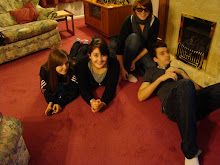From looking at our photos, we feel that they are good but they can be improved much more. The image we feel is powerful is the photo of Nicola looking back at the camera, holding her teddy bear in her hand. It was too dark when taking the photos, but when trying to use torches and car headlights, it gave shadows of unwanted objects. As there was a gate infront of where the car was parked you can see the shadow of the gate when taking the photo without the flash, but when taking the photo with the flash, the photo quality was reduced and it revealed too much light.
So when we take the photos again later this week we will take the photos when it is starting to get dark, we like the feeling of it starting to get dark, as at this moment in the film, it is starting to get dark.








